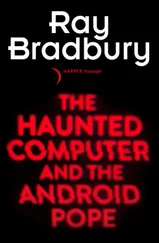I've seen Paul only a few times, but of course I knew all the Lutus legends long before I first met him. Hearing about Paul Lutus was one of the mandatory initiation rituals in the software industry. Not long ago, I finally saw him on his own turf and asked him, face to face, which of the Lutus stories are true and which are fictional. In the summer of 1984, he invited me up to his latest mountaintop retreat, in southern Oregon. When I got there, he told me the highlights of his strange story.
To get to Paul’s place I flew into the small airport in Medford, Oregon. Had he not picked me up in a four-wheel-drive Subaru station wagon, I never would have found his house myself. We got off a main highway and headed for the nearest forested hills, where we crossed a covered bridge, followed a steadily deteriorating roadway that runs alongside a stream, turned off through an inconspicuous and unmarked gate onto a gravel road, and drove straight across a rough landing strip. Then we drove past a “No Trespassing” sign and a “Warning: Protected by Guard Dogs” sign, and after the “Radiation Hazard” and “Mine Field: Contact Commanding Officer for Map of Area” signs, we finally arrived at a large house built into a mountain—Lutus Central.
Paul claims that his independence and his reclusiveness began during his unpleasant childhood in San Jose, California. “My family is very peculiar,” he told me. “Even when we were living in the same house, we didn’t talk with each other.” Paul’s father, a machinist, worked for IBM, and when Paul was young his father sometimes brought home obsolete computer parts. Paul remembers retreating into his workshop and his imagination, putting the components together in different combinations and pretending that they made a real computer. In the fifth grade, when his teacher wanted to put him in a class for slow learners because he always seemed to be dreaming or doodling in some world of his own, a test revealed that he had a genius IQ.
In high school, he was the classic example of a brilliant but emotionally tortured nerd. Only a few years before, he had been considered “slow,” and now he found himself regarded by his peers as a “brain,” which made him more of an outsider than ever before. Although he did have a few friends, he was pretty much of a loner who entertained himself. He built his own ham radio and an oscilloscope that he traded to a friend for a used bicycle. He remembers riding his clunky bike to and from school whereas his classmates drove their cars to football games and dates. “I was the most socially unacceptable person who ever went to that high school” is the way he remembers it now.
At sixteen he dropped out of school and got a job as a television repairman. Then, some years later, attracted by the countercultural ethic, he decided that making money wasn’t a decent goal in life and quit the television repair business to live on the streets and make it as a folksinger during the height of the Haight-Ashbury and East Village scenes of the 1960s. Several years later, facing a winter on the streets of New York, he finally decided that having a job and a regular address wouldn’t be so indecent after all. Establishing a modus operandi that was to serve him well for years to come, he walked into the instrumentation laboratory at New York’s Mount Sinai Hospital and, with typical verbal persuasiveness, talked his way into a job building electronic equipment for medical research.
In the spring of 1974, after about a year at Mount Sinai, Lutus decided to ride his bicycle from New York to California. He was twenty-seven years old. He had no attachments and no particular plans for the rest of the year, to say nothing of the rest of his life. In Boulder, Colorado, he took some time out to learn hang-gliding, then bought a motorcycle and continued westward. The motorcycle and his money gave out somewhere around Sacramento. He hitchhiked to San Francisco, picked up a newspaper, and saw an ad for a job he knew he could do. He cleaned himself up as much as possible and performed a bit of his patented verbal razzle-dazzle on the personnel officers of an aerospace contractor.
He told a tale about a technical education he never had, but, showing that he knew what he was doing when it came to electrical and electronic design, he talked his way into a contract to design part of the complicated lighting system for the first Space Shuttle. His brilliant solution to this technical problem won him a bonus and a certificate of recognition from NASA. The aerospace contractor offered him other projects, but Lutus declined and in fact quit the job right then and there.
The subcontractor was reluctant to see him go, since he had turned out to be the star performer whenever NASA officials showed up to see how the lighting project was progressing. He had a knack for filling blackboards with equations and deftly fielding all technical questions with extemporaneous dissertations on the details of his design. But Paul was determined to get himself some breathing and thinking space. He had lived on the streets and in the parks, he had been a hobo and an aerospace engineer, he had traveled and dealt with too many people, and now it was time to find a place to be alone with his thoughts. And so he took his NASA money, told his former employers that he would be back to work for them as soon as he needed more money, and left San Francisco for the deep back country of Oregon.
In the spring of 1976, Lutus backpacked construction materials to the top of Eight Dollar Mountain, a wooded ridge 400 feet above a wilderness valley in Oregon, and hand-built a 12- by 24-foot cabin. After the cabin was finished, the provisions and modest furnishings were packed in, and the wood was chopped for the winter, the one thing he had in abundance was spare time, so he taught himself programming. At the time, he undoubtedly fit the classical definition of a poverty-stricken “hermit,” but eventually his self-taught programming skill would eliminate his poverty and make him a rich hermit instead.
To most people, hackers are just the latest and perhaps the scariest variety of mad scientist. Weird computer guys, in the minds of the nonprogramming majority, are exactly like other weird technocultists. But people like Paul Lutus turned a much more favorable light on the public image of the programmer when they showed how much their arcane skill was worth on the open market. Some of the early entrepreneurial hackers of the microcomputer age came up with something that no previous variety of obsessed scientist had procured— vast amounts of money. As for Lutus himself, it is ironic that after he painstakingly worked himself into a position of bucolic solitude and lived a lifestyle that took a lot of manual labor to maintain but paid him very little in terms of money, one of the first things he did to amuse himself ended up making him rich.
That first winter, when he found himself alone with his thoughts in his wood-heated, waterless cabin, Paul started toying with one of the few items he had brought with him—a sophisticated battery-powered Hewlett-Packard electronic calculator. He told me that he had brought the calculator up to the cabin in the first place to help him with basic arithmetic. Higher mathematics had always interested him, but he had never bothered to memorize even the multiplication tables.
“The law said I had to attend school, so I was physically present in the classroom after the seventh grade” is the way he puts it, “but I wasn’t there in any intellectual sense. I was in the back of the room with my own books. At home I built radios. I didn’t know my multiplication tables, but I sure as hell knew how to think.”
And as it happened, by setting up equations in proper sequences, he figured out how to create a limited variety of programs on the calculator. As an exercise, he made a pocket-calculator model of the solar system and wrote an article about it for publication in an electronics hobbyist magazine. The Jet Propulsion Laboratory wrote Lutus to tell him they were using his calculator model to help perform their own calculations for the Viking Mars-lander mission.
Читать дальше










